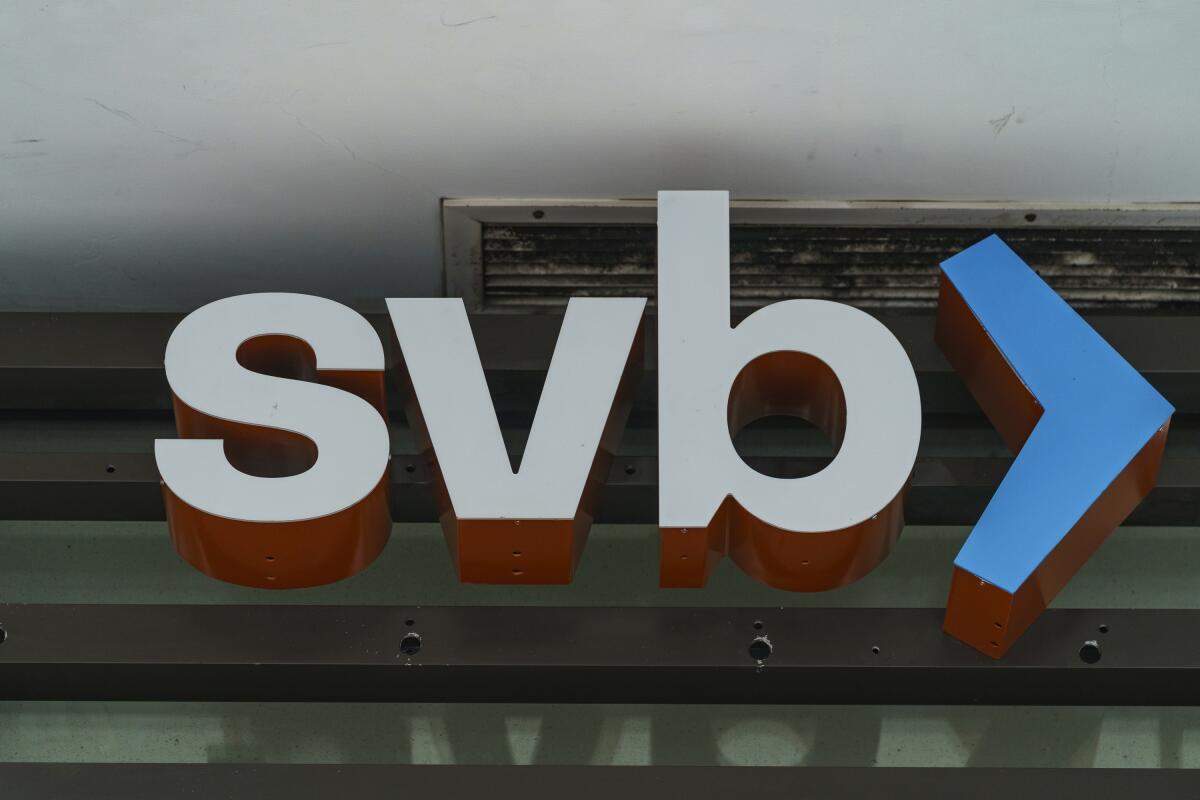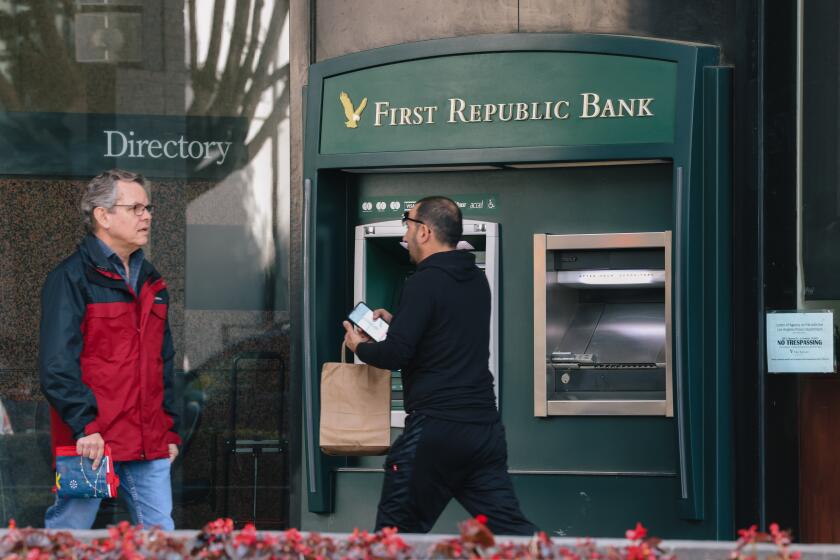White House proposes tougher bank rules, new tests after crisis

- Share via
President Biden’s administration is pressing regulators to tighten the rules for midsize banks, its strongest step yet in response to the banking crisis that led to the failure of a pair of regional lenders.
The White House on Thursday called for federal banking agencies, in conjunction with the Treasury Department, to enact a series of changes. None of the measures requires congressional approval, the White House said in a statement, though it’s not clear if regulators will enact them.
The package bears the fingerprints of one of Biden’s new top aides, former Federal Reserve Vice Chair Lael Brainard, who has long warned that she thought that deregulation legislation passed in 2018 went too far. Brainard took over Biden’s National Economic Council last month.
The changes include reinstating rules for banks with assets between $100 billion and $250 billion — a category that Silicon Valley Bank, one of the institutions that failed, fell into — including liquidity requirements, enhanced stress testing and “living wills” that show how banks that size could be wound down.
The White House also called for:
- Annual stress tests for banks in that range, instead of every two years
- Shortening the time to apply stress tests once banks reach $100 billion in assets
- Strengthening supervisory tools to ensure banks can withstand rising interest rates.
The White House backed calls for community banks to not share the cost of replenishing the Deposit Insurance Fund, which was used to backstop SVB and Signature Bank, which also failed. The White House called on the Federal Deposit Insurance Corp. to replenish the fund without relying on community banks.
Regulators are still working to stabilize the banking sector after the collapse of Silicon Valley Bank and Signature Bank.
The moves come as Biden searches for tools to further calm the banking crisis and prevent another failure.
A White House official, briefing reporters on the announcement, said it would ultimately be up to regulators to enact the changes but that the administration had spoken with them in preparing its proposals.
The official told reporters that the administration believes the situation has stabilized greatly over the past weeks after the initial interventions. The proposed changes are intended to make sure the system is resilient going forward, the official said.
The White House is watching deposit outflows closely as a measure of the ordeal, two other officials, speaking separately on condition of anonymity, said.
Brainard’s presence in Biden’s inner circle in the early days of the crisis helped steer the initial response, and the officials said she has been particularly strong in helping quell the banking contagion. Brainard’s tenure at the Fed was marked by repeated warnings that deregulation stemming from the 2018 law presented risks, including for banks with deposits between $100 billion and $250 billion.
The Silicon Valley Bank failure is the old story of what happens when short-term depositors want their money back from a bank with only long-term assets.
Treasury Secretary Janet L. Yellen also warned in a speech Thursday that deregulatory efforts might have gone too far and contributed to the recent crisis.
Republicans quickly fired back at the White House proposals. House Financial Services Committee Chairman Patrick McHenry of North Carolina said in a statement that the “Biden administration continues to politicize the failure of SVB and Signature Bank to push long-held progressive priorities unrelated to the causes of the collapses.”
The Bank Policy Institute, a trade group for the largest banks, urged caution on adopting new regulations.
“It would be unfortunate if the response to bad management and delinquent supervision at SVB were additional regulation on all banks that would impose meaningful costs on the U.S. economy going forward,” Greg Baer, the group’s chief executive, said in a statement. “The Fed has barely begun its promised review. This has a strong feeling of ready, fire, aim.”
The Fed has launched an investigation into the events that led to the collapse of Silicon Valley Bank in California, and Congress is likely to open its own inquiries.
Better Markets, a Washington financial watchdog, applauded the White House proposal.
Silicon Valley Bank failed late last week, prompting fears of wider upheaval. Here’s what you should know about the collapse and what comes next.
“We look forward to prompt action by the agencies following up on today’s important words and directives from the White House,” said Dennis M. Kelleher, the group’s chief executive.
Progressive lawmakers have pointed to the 2018 deregulation push as a contributor to the bank failures, whereas conservative lawmakers who backed deregulation have laid blame elsewhere, such as with regulators.
The rollback of banking regulations under former President Trump garnered the votes of more than a dozen Democratic senators.
Former Treasury Secretary Steven Mnuchin defended that rollback on Thursday.
“We passed bipartisan legislation on banking reform. I know there’s a lot of discussions now that that was the cause. I think that’s ridiculous,” Mnuchin said at the FII Institute’s Priority summit in Miami Beach, Fla. “It should be that regulators require banks over $100 billion to do stress tests on interest rates.”
Bloomberg reporters Jennifer Jacobs, Jordan Fabian, Jenny Leonard and Allyson Versprille contributed to this report.
More to Read
Inside the business of entertainment
The Wide Shot brings you news, analysis and insights on everything from streaming wars to production — and what it all means for the future.
You may occasionally receive promotional content from the Los Angeles Times.












